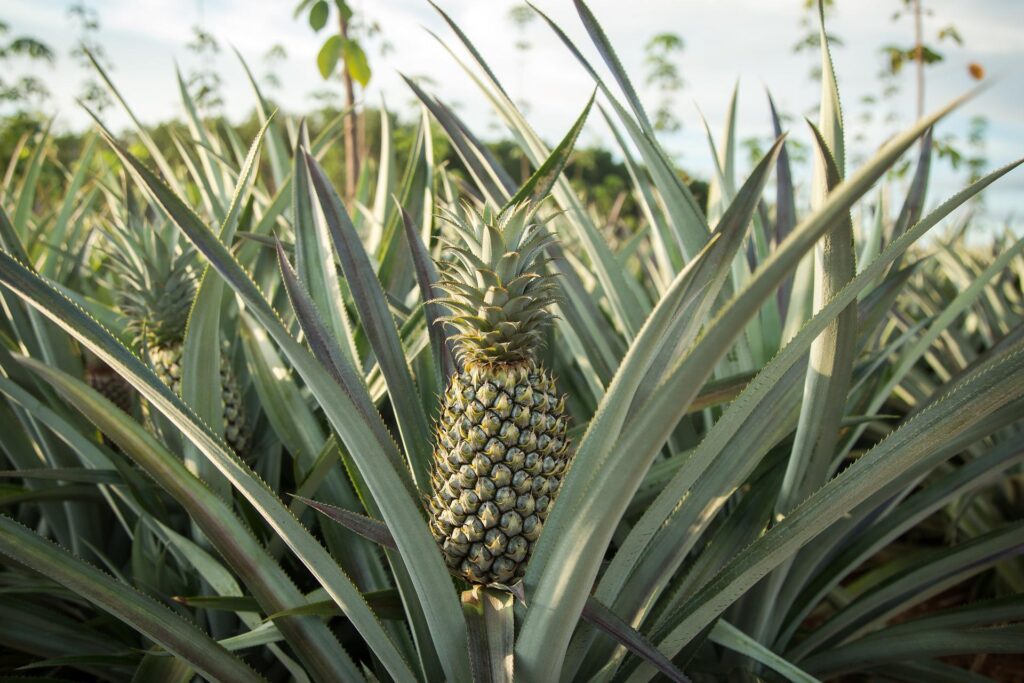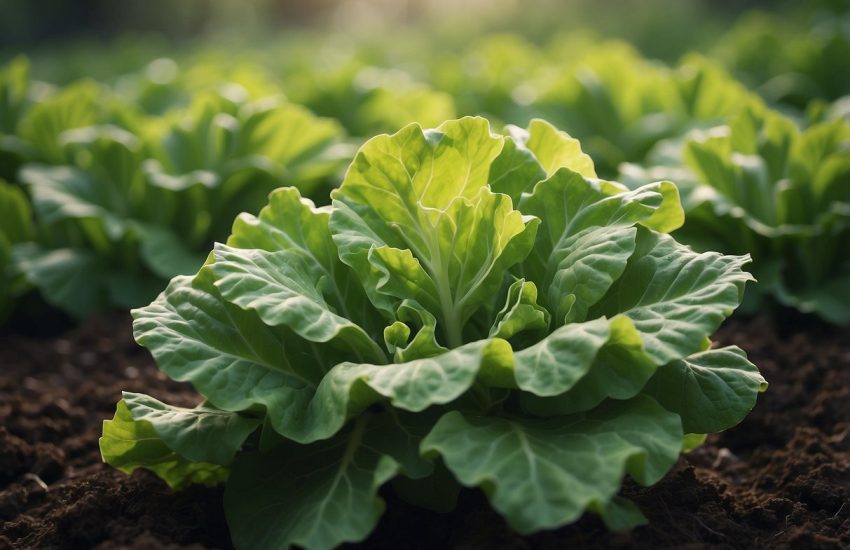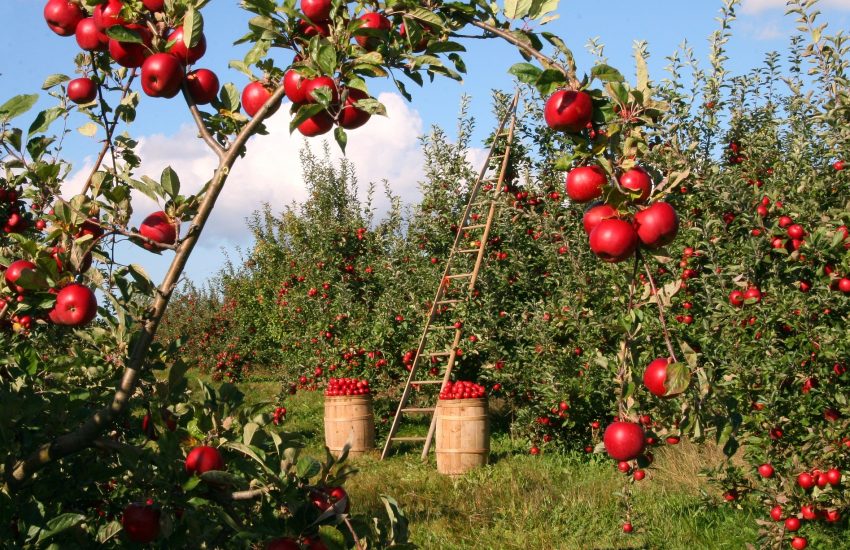Pineapple Farming: A Complete Guide
Pineapple, one of the most exotic fruits which are rich in flavor, continues to remain one of the most commercial fruits all over the world. Ananas Comosus, commonly known as Pineapples was cultivated initially in Brazil after which it spread to various tropical parts of the world. Pineapple farming has a strong foothold in Brazil, China, Nigeria, India, Colombia, and Mexico.

Nutritional Value of Pineapple
Pineapples not only taste delicious but are filled with various nutrients and vitamins and minerals which makes the fruit more important and desirable. Despite their unique flavor, pineapples hold as a good source of vitamins A, B, and C. Pineapples are also an excellent source of certain minerals like Calcium, Magnesium, Potassium, and iron. Another important nutritional value of the pineapple is the presence of a digestive enzyme.
The presence of Bromelain, which is a digestive enzyme increases the value of pineapple. However, it does not hold as necessary to consume pineapples as fresh fruit. Canned and processed pineapples also hold the same nutrient value as fresh fruits. Such value and convenience have made pineapples have a greater economic value and ultimately become a type of commercial farming.
Suitability of Climate for Pineapple Farming
Like most types of farming, pineapple farming also requires certain criteria for its growth and success. Pineapples respond well to rainfall. Heavy rainfall is the optimum condition for pineapple farming. 1500 mm of rainfall per year stands as the best condition for the continuation of pineapple farming. However, pineapple farming can be carried on in places with even 500 mm of rainfall if various measures are taken for irrigation and extra precaution is paid.
Pineapple, being a tropical fruit, requires humid climatic conditions. Thus, pineapple farming could be carried on in the coastal areas as well as interior areas as long as the climate is humid and not too hot or too cold. The optimum temperature for pineapple farming would be around 15 to 32 degrees Celsius which is a humid climate. Extreme hot temperatures, heavy exposure to the sun and lack of sunlight are very risky in the case of pineapple farming and could potentially kill the pineapples.
See Also: Chickpea Farming
Suitability of Soil for Pineapple Farming
Pineapple, like most tropical fruits and vegetation, can thrive in any type of soil. Yet, to ensure great success and good growth and development, the soil could be altered to better suit the needs of pineapple. Pineapple farming must primarily focus on maintaining well-drained soil. A soil that is not well drained could damage the pineapples and hold back their growth.
Due to the need for well-drained soils, clayey soils are not preferred. Pineapples respond well and develop in sandy soils, alluvial soils, and laterite soils. The pH value of the soil also influences the growth of the pineapples. Slightly acidic soil does great good for pineapple farming. Thus, the preferred pH value of the soil stands at 5.5 to 6.0. Slightly acidic and well-drained soil is the key to pineapple farming.
Land Preparation for Pineapple Farming
Just as with any other farming, pineapple farming also requires certain procedures where the land is made ready before the process of farming begins. The initial preparation of the land is just the same as it is done for other crops. The land is first plowed. Once the plowing of the land is done, it is dug. The last step is leveling the land to ensure cultivation takes place. Trenches are then prepared for cultivation. The desirable width of these trenches remains at 90 cm and the width of these trenches remains at 30 cm. The size of the trenches can vary from one farm to another.
Season of Pineapple Farming
A tropical plant, preferring humid temperatures can grow both at lower altitudes and at higher altitudes. It can grow in hilly regions as long as the altitude does not exceed 900 m. Pineapples are not tolerant of hot temperatures and direct exposure to the sun. just the same way, pineapples are also not fond of cold and cannot survive conditions of frost and dim light.
The flowering season of pineapples usually occurs from the month of February to April which will be followed by the season of fruits, mostly in the months of July to September. Thus, the main part of a pineapple’s lifecycle is from the month of February to September. There are certain instances where a pineapple plant could produce off-season fruits. Such off-season fruits are produced in the months of September to December.
Planting of Pineapples
The pineapple plantings are usually obtained from propagation. This method could be of several types such as Sucker, Slip, or Crown. The young shoots that are planted are usually about 5 to 6 months. The pineapples planted by the method of Sucker and Slip usually flower around 12 months of planting. The pineapple farming carried on by following the Crown method flower at around 20 months after planting. Modern times have enabled pineapple farming even through means of tissue culture.
Since pineapple farming is commercial farming focused on increasing economic returns, high-density cultivation is being practiced. The approximate number of 63000 pineapples/ha is considered the most ideal. This is followed in case of the environment being sub-tropical and mildly humid. However, in the case of hot and humid nature, the density must be held at 53000 / ha. In cases of pineapple farming where the area is hilly and fertile, a lower density is recommended. 31000 plants/ha is considered ideal for commerciality in cases of these hilly and fertile lands.
Around 105 tons/ha would be the approximate productivity in the case of high-density planting. However, the yield is not always the same and may vary due to the influences of various external factors such as diseases, sunburns, weed encroachment, and various other factors that are hard to check. However, the practice of high-density planting strives to eliminate the exact things, making it a beneficial method of practicing pineapple farming.
Methods of Pineapple Farming
Different methods of planting are followed in the case of pineapple farming. These methods are chosen in regard to the external environment. Each method is more potent in each environment; thus, the right method has to be chosen so as to increase the productivity of the farm. Usually, pineapple farming can be practiced in four different methods. These methods are Flatbed, Furrow, Contour, and Trench.
The method of Contour and trench is usually followed in hilly areas because of the sloping nature of the land on which the farming is carried on. Thus, these methods protect the farming land from the dangers of soil erosion and landslides, thereby protecting the corps. Therefore, an appropriate method has to be chosen by considering in mind, the elevation of the land, the rainfall received, and the topography of the given land so as to increase production and ensure maximum productivity.
Intercultural operations
Pineapple farming includes a special kind of operation called Earthing up. The process of Earthing up is vital in the case of pineapple farming. It ensures that the pineapples are firmly and steadily planted. Earthing up is a process where the soil is steadily pushed into the trench from the ridges, where trench farming is a common practice.
In the case of flatbed planting, which is usually carried on in heavy rainfall areas, the plants are lodged as the pineapples have very shallow roots. This lodging of plants, especially when the pineapple is bearing fruits could result in the lopsided growth of pineapples. It could also cause uneven ripening of fruits. Thus, the problem of lodging poses a big threat to pineapple farming. Earthing up and the practice of high-density farming could minimize this because the plans would prop and support each other.
Irrigation of Pineapple Farming
Pineapples thrive and develop in areas of heavy rainfall. The optimum rainfall required by pineapples is around 1500mm per year. Thus, pineapples are usually planted in areas with good rainfall. However, in case of failure of rains or a slightly lesser level of rains, supplementary irrigation could be carried on so as to ensure the production of good fruits and successful farming. Irrigation of pineapples could also lead to successful farming in cases of areas with scanty rainfall.
Though places with scanty rainfall are not suitable for pineapples, they could still be grown and developed with sufficient irrigation from time to time. Pineapple farming is a type of farming that can use irrigation as a type of supplement and not rely on it as the only source of water. In such cases, the yield of pineapple farming would be maximized.
Diseases in Pineapple Farming
Pineapples are usually not affected by a lot of diseases. Their resilient nature makes it easier to manage the plant as there are not much of threats from insects and diseases. However, a few bugs and insects may cause some trouble in the case of pineapple farming. These types of diseases are usually easily eliminated. The other concern in the case of pineapple farming is stem rot. Stem rot poses potential risks and various precautions ought to be taken to prevent it.
There are a few steps and measures which could help avoid the risk of such situations. Ensuring good drainage is the foremost among them. Lack of clogged water would minimize the chances of stem rot to a great extent. Sometimes, dipping the shoots in Bordeaux before planting them into the soil, also aids as a protective shield and prevents various diseases and stem rots. Thus, these few cautious steps could result in a healthy and thriving pineapple farm.
Fertilizers use in Pineapple Farming
Since pineapples are heavily nutritious fruits, it is only natural that they absorb a lot of nutrients from the soil to grow and develop. The pineapples absorb nitrogen and potassium. Since pineapples rely heavily on the absorption of nitrogen and potassium; the soil tends to lose the nitrogen and potassium it holds.
Thus, it remains a must for the application of fertilizers to the soil to ensure the fertile nature of the soil is sustained. Nitrogen and potassium must be added to the soil so as to help in the growth of the pineapples and prevent the soil from becoming infertile after losing its nutrients. Thus, the application of fertilizers is a vital part of pineapple farming which cannot be ignored at any cost.
Yield
Pineapples start bearing fruits around 12 to 20 months depending on the type of plant, method of the plantation, location of the pineapple farm and the method of irrigation followed. Once the fruits are borne, they are ready to pack when they are ripe which is usually indicated by the golden hue. Pineapples are commercial fruits that have great economic value.
Thus, they could be sold at a good price in their natural forms or processed forms. The pineapples can be processed or even canned before selling. However, the yield of pineapple farming is quite high and economically beneficial. The pineapples yielded could be solid at local markets, however, in the past years, the pineapple export and imports have significantly increased, taking up the value of pineapple farming.
Conclusion
Pineapple farming is one of the most successful commercial farming. Because of the economic returns of pineapple farming, it has started to increase in its popularity all over the globe and is emerging as a new trend in farming. With knowledge and awareness regarding pineapple farming, this could be a successful and highly beneficial venture.


